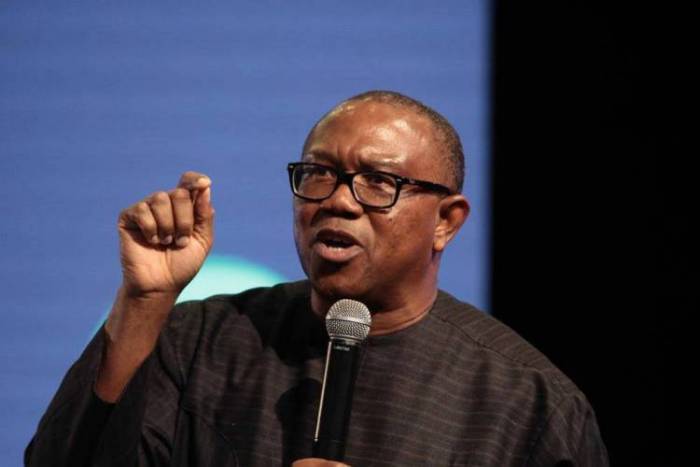FACT CHECK: Is Peter Obi Right That Nigeria’s Debt Profile Is Out Of Control?
A former governor of Anambra State, Mr. Peter Obi, stirred the hornets’ nest on Wednesday when speaking as a guest on Channels Television flagship programme, Sunrise Daily, raising the alarm that Nigeria’s debt profile is escalating and should be controlled immediately.
Obi said the federal government borrows for consumption and uses almost 50 percent of its revenue to service debts rather than for infrastructural development.
Advertisement
“When you are borrowing for consumption, it gets to a stage where you cannot control it,” Obi said.
According to him, every known respected financial institution globally has warned Nigeria against its rising debt, including the World Bank and the International Monetary Fund, IMF.
Following Mr. Obi’s claim, THE WHISTLER decided to do a fact check to substantiate the authenticity of the former governor’s allegations.
FIGURES BY DMO, Budget Office
Advertisement
According to figures available on the website of the Debt Management Office, DMO, Nigeria’s public debt stock as at June 30, 2018 is about N22.3 trillion.
Out of this amount, N12.15tn (roughly 50 per cent) was borrowed by the Federal Government from the domestic debt market.
The DMO said that at the end of June 2016, that the country’s total debt was about N16 trillion, representing an increase of over N8 trillion in two years.
According to data released by the DMO, the Nigerian government’s domestic debt stood at N16.62 trillion, as against N13.1 trillion recorded in 2016. This represents a domestic borrowing increase of 27 per cent.
On the other hand, Nigeria’s external debt for the federal and state governments rose from N3.18 trillion to N6.75 trillion in two years, representing an increase of N3.57 trillion.
Advertisement
The DMO noted that the official exchange rate of N305.70 to $1 was deployed in calculating the country’s external debt for June 30, 2018, while the official rate of N283 to $1 was used in determining the foreign debt for June 30, 2016.
According to the figures, the federal government spent a total of N1.58tn on domestic debt servicing in the first half of the year.
The huge payment on debt servicing shows how far the country’s debt profile has risen over the years especially in the last three years.
Also, data from Budget Office of the Federation, of the N7.4 trillion budgeted for the 2017, N1.8 trillion (about 25 percent) was used for debt servicing, with domestic debts gulping N1.5 trillion, while foreign debts N175 billion.
FACT
N2.9 trillion was used for recurrent expenditure, while N2.1 trillion for capital expenditure.
Advertisement
According to data from the Budget Office, deficit of N2.36 trillion for the 2017 Appropriation Bill, which was about 2.18 percent of the GDP, will be financed mainly by borrowing, which was projected to be about N2.32 trillion. From the figure, government sourced N1.06 trillion or about 46 percent of the borrowing from external sources while N1.254 trillion from the domestic market.
This means that out of estimated amount of N2.32 trillion borrowed to finance the budget, N2.1 trillion went for capital projects.
Obi was right to say the country’s debt was rising fast, but there are no facts to show that the Nigerian government was borrowing for consumption.



